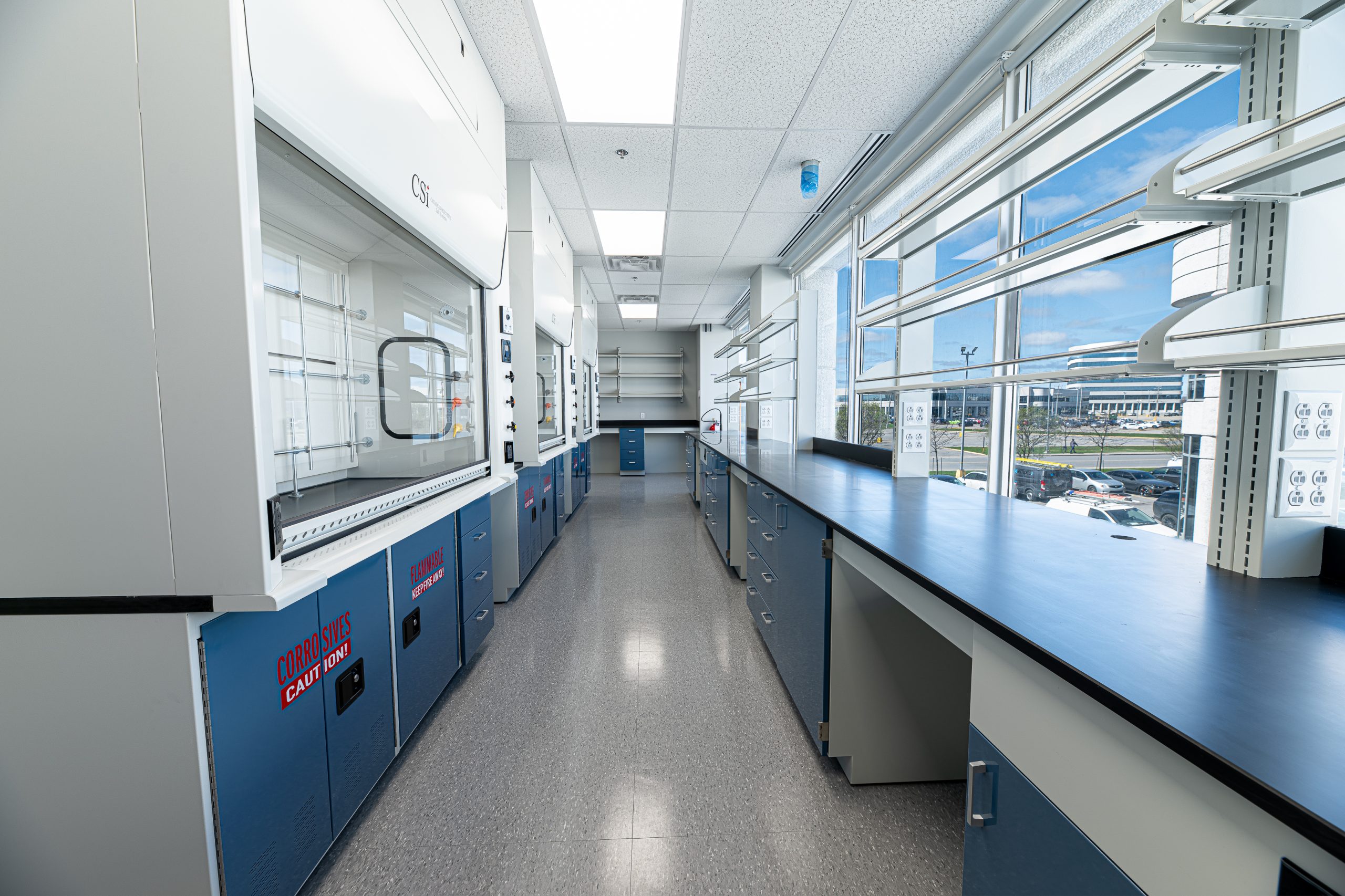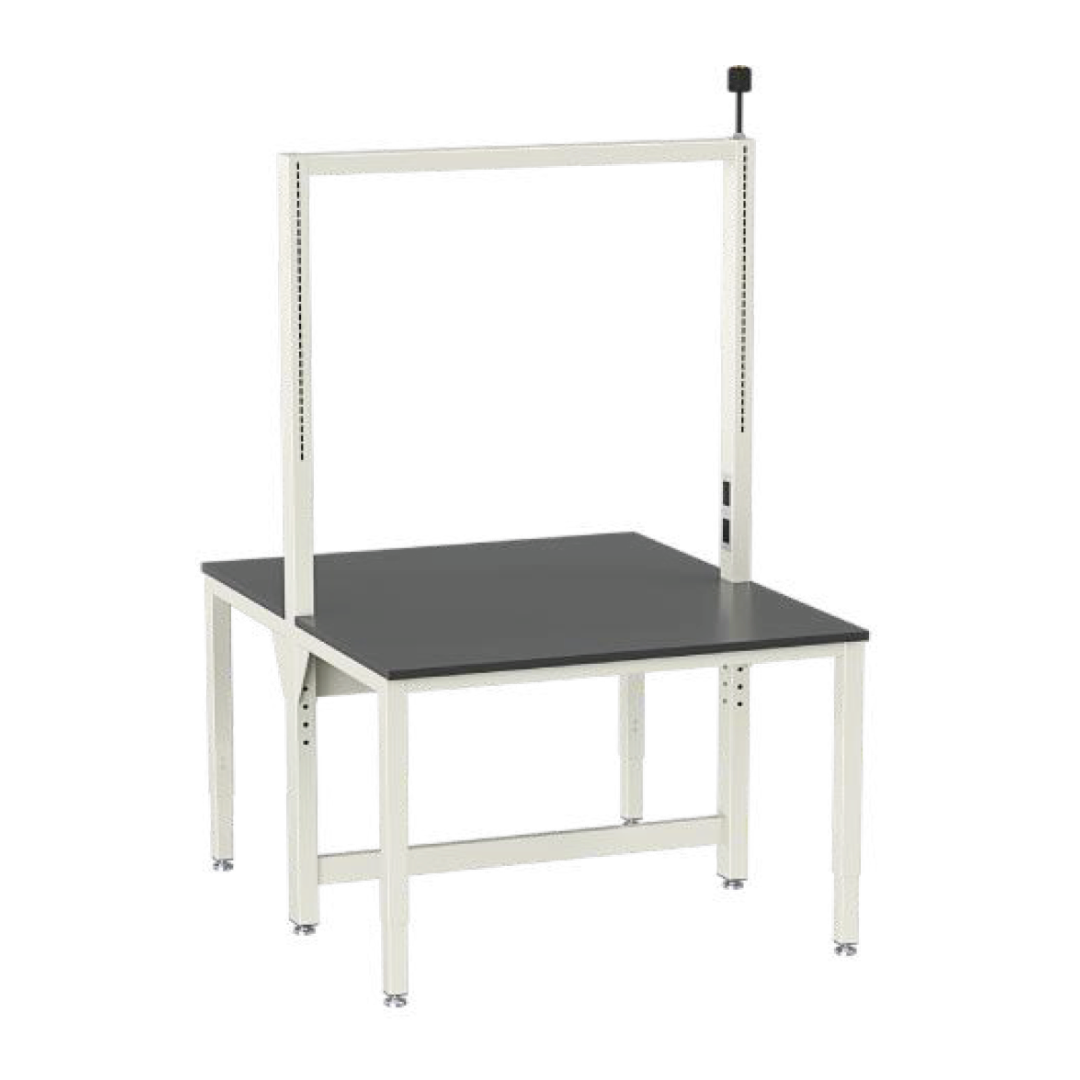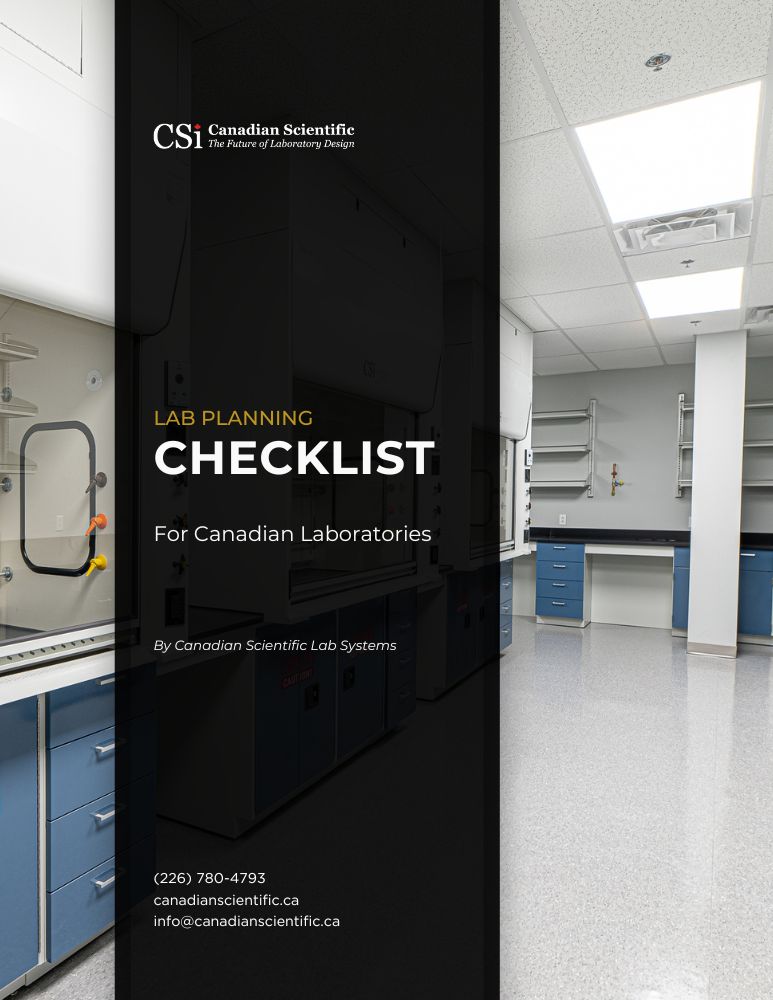
Photo: Canadian Scientific Lab Systems, 2025
Finding the Right Fit
When you walk into a well-designed laboratory, the space flows. Equipment fits perfectly. Workflow feels natural. That doesn’t happen by accident. It happens through smart furniture planning. One of the first big choices is whether to go with fixed or flexible lab furniture.
What Is Fixed Lab Furniture?
Fixed lab furniture refers to casework that is affixed to the walls and floor of the laboratory. They’re designed to maximize the storage and usable space within the lab. This is typically the recommended way to design a laboratory that has been planned for long term use with the same applications.
Pros of Fixed Lab Casework
✓ Durability & Stability
Fixed casework is anchored to the floor and walls, providing a solid, vibration-resistant structure ideal for precision work, heavy instruments, or sensitive testing environments.
✓ Optimized Use of Space
Because it’s custom-fitted to the room, fixed casework can maximize every inch of usable space—especially along walls or under fume hoods—creating a cleaner, more efficient layout.
✓ Professional, Permanent Aesthetic
Built-in cabinetry gives the lab a finished, institutional look. It often aligns better with long-term facilities such as hospitals, universities, or government labs where stability and consistency are priorities.

Photo: Canadian Scientific Lab Systems, 2025

Photo: Canadian Scientific Lab Systems, 2025
Cons of Fixed Lab Casework
✘ Limited Adaptability
Once installed, fixed furniture can’t easily be reconfigured. If research priorities or equipment change, modifications often require renovation or reinstallation.
✘ Higher Installation Costs & Downtime
Because its built-in, installation is more labour-intensive and disruptive compared to modular systems. Any rework later adds additional cost and downtime.
✘ Reduced Flexibility for Future Growth
As technology and workflows evolve, fixed layouts can become restrictive. Labs with rapidly changing programs or equipment may find it difficult to adapt without tearing out existing infrastructure.
Fixed Lab Furniture is best for facilities looking to have a permanent long-term solution. Products to consider: Standard Metal Casework by Canadian Scientific
What Is Flexible Lab Furniture?
Flexible or modular lab furniture is designed for evolving and growing laboratories. It provides customizability for storage layouts and utility integration, while not limiting future expansion.
Pros of Flexible Lab Furniture
✓ Adaptable to Change
Modular casework can be reconfigured as research needs evolve. Whether you’re adding new equipment, changing team sizes, or shifting focus, flexible furniture allows the lab layout to evolve without costly renovations.
✓ Faster Installation & Reduced Downtime
Because units are freestanding or mobile, installation is quicker and less disruptive. This makes flexible furniture ideal for facilities that need to stay operational while upgrades or expansions take place.
✓ Long-Term Cost Efficiency
Although the initial cost can be similar to fixed systems, flexibility reduces long-term expenses by eliminating the need for major reconstruction when the lab’s purpose or layout changes.

Photo: Canadian Scientific Lab Systems, 2025

Photo: Canadian Scientific Lab Systems, 2025
Cons of Flexible Lab Furniture
✘ Less Structural Stability
Freestanding units are not as rigid as fixed installations, which can be a drawback for heavy or vibration-sensitive equipment that requires maximum stability.
✘ Potential for Reduced Storage Density
Modular systems may sacrifice some storage capacity to maintain mobility and clearance space, slightly reducing usable cubic footage compared to fixed casework.
✘ Less Integrated Appearance
Flexible systems can look more industrial or “temporary” compared to the built-in, architectural finish of fixed casework—something to consider for client-facing or high-profile lab environments.
Flexible Lab Furniture is Best For: University research laboratories, Start-Ups, Contract research organizations & companies experiencing exponential growth. Products to consider: Flexible Lab Furniture by Canadian Scientific
When to Mix Both
Some of the most effective labs we’ve built combine both systems, fixed casework along perimeter walls for sinks, utilities, and heavy equipment, paired with modular islands in the centre for reconfigurable work zones.
For example:
- All wash-up and heavily mechanical reliant areas to be located against walls with fixed casework, while all seating and flexible work is done on modular central islands.
This hybrid approach gives labs both flexibility and refinement and keeps the budget in check.
Free Resource: Lab Planning Checklist for Canadian Facilities
Be sure to consider every detail, from surface materials to mechanical integration. Download our free “Lab Planning Checklist for Canadian Facilities.” Inside, you’ll find a pre-installation checklist for architects and lab managers.
Contact us today to learn how Canadian Scientific can maximize your laboratory design and future-proof your investment!
Return to Blog Main Page
Advance your research with full confidence in your lab.

 Products
Products Products
Products